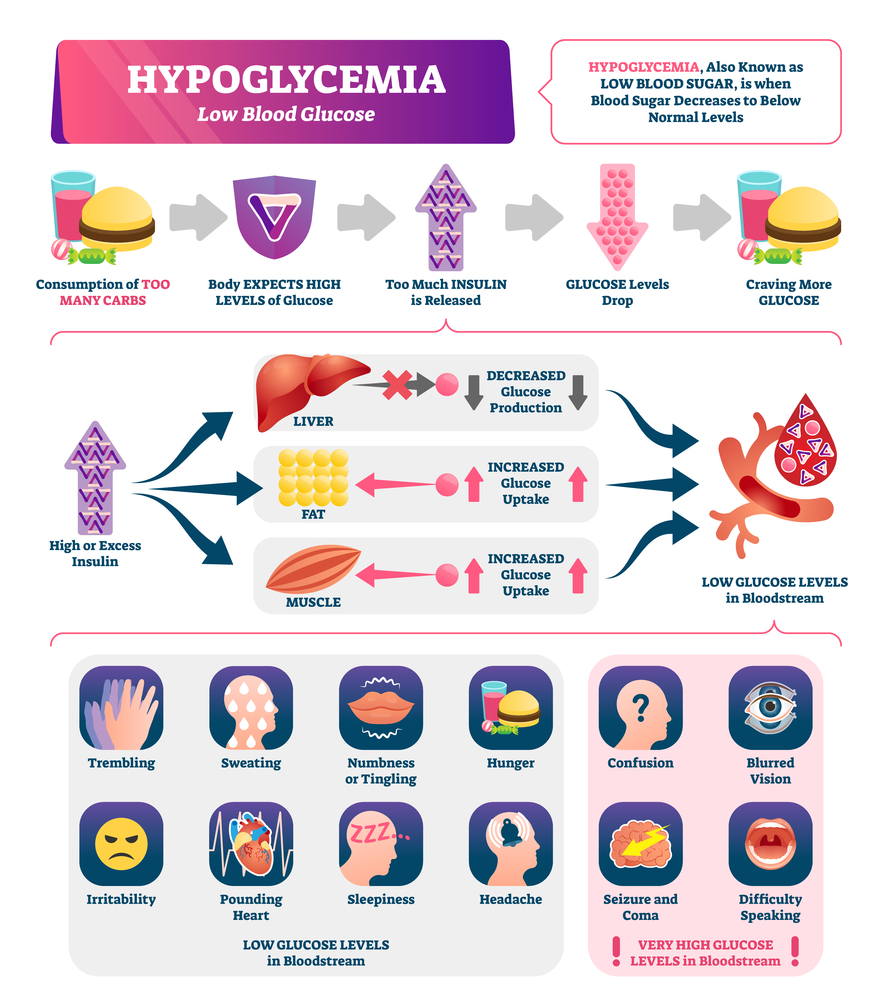Hypoglycemia in Type 1 Diabetes: Symptoms, Management, and Control Strategies
Living with type 1 diabetes can present various challenges, and one of the most significant concerns is managing blood sugar levels. Hypoglycemia, also known as low blood sugar, is a common occurrence for individuals with type 1 diabetes.
It’s crucial to be aware of the signs and symptoms of hypoglycemia and to understand how to effectively control it. In this blog, we will delve into the topic of hypoglycemia in type 1 diabetics, providing valuable insights into its signs, symptoms, and methods for control.
What is Hypoglycemia?

Hypoglycemia refers to a condition where blood sugar levels drop below normal levels, typically below 70 mg/dL (3.9 mmol/L).
In type 1 diabetes, hypoglycemia is commonly caused by an imbalance between insulin intake or production and the amount of food or glucose in the body. It is essential to recognize the signs and symptoms to take prompt action and prevent complications.
Sings and Symptoms

- Sweating
- Shakiness or trembling
- Dizziness or lightheadedness
- Hunger or increased appetite
- Confusion or difficulty concentrating
- Fatigue or weakness
- Headaches
- Irritability or mood swings
- Blurred vision
- Palpitations or rapid heartbeat
How to Control Hypoglycemia
Regular Blood Sugar Monitoring
Frequent blood sugar monitoring is key to identifying and preventing hypoglycemia. Utilize a glucose meter or continuous glucose monitoring (CGM) system to keep track of your blood sugar levels throughout the day.
Balanced Insulin Administration
Work closely with the providers in our clinic as well as the diabetic educators to determine the appropriate insulin dosage and timing to avoid excessive insulin doses that can cause hypoglycemia.
Consistent Meal Planning
Maintain a well-balanced diet with regular meal timings to provide a steady supply of glucose to your body. Include a combination of carbohydrates, proteins, and fats in your meals and snacks.
Carbohydrate Consumption
Having fast-acting carbohydrates readily available is crucial to counteract hypoglycemia quickly. Examples include glucose tablets, fruit juices, regular soda, or hard candies. Learn how many grams of carbohydrates you need to raise your blood sugar to a safe level.
Adjusting Physical Activity
Be mindful of physical activity’s impact on blood sugar levels. Adjust your insulin dosage and/or carbohydrate intake before exercising to prevent hypoglycemia during or after physical activity.
Communication and Support
Inform your family, friends, and coworkers about your condition and educate them on the signs and symptoms of hypoglycemia. They can provide assistance during episodes of low blood sugar and help seek medical attention if needed.
Know Emergency Procedures
In severe cases of hypoglycemia where the individual becomes unresponsive or unable to consume oral carbohydrates, it is crucial to have a glucagon emergency kit available. Family members, friends, or coworkers should be trained on how to administer glucagon in case of an emergency.
Living with type 1 diabetes requires constant vigilance to maintain blood sugar levels within a healthy range. Understanding the signs, symptoms, and effective control measures for hypoglycemia is crucial for individuals with type 1 diabetes. By actively monitoring blood sugar levels, adhering to a balanced diet, and having a support system in place, you can effectively manage hypoglycemia and reduce its impact on your daily life. Remember, all of us a DETS is available to support and educate you and partner with you in your wellness, not illness!



